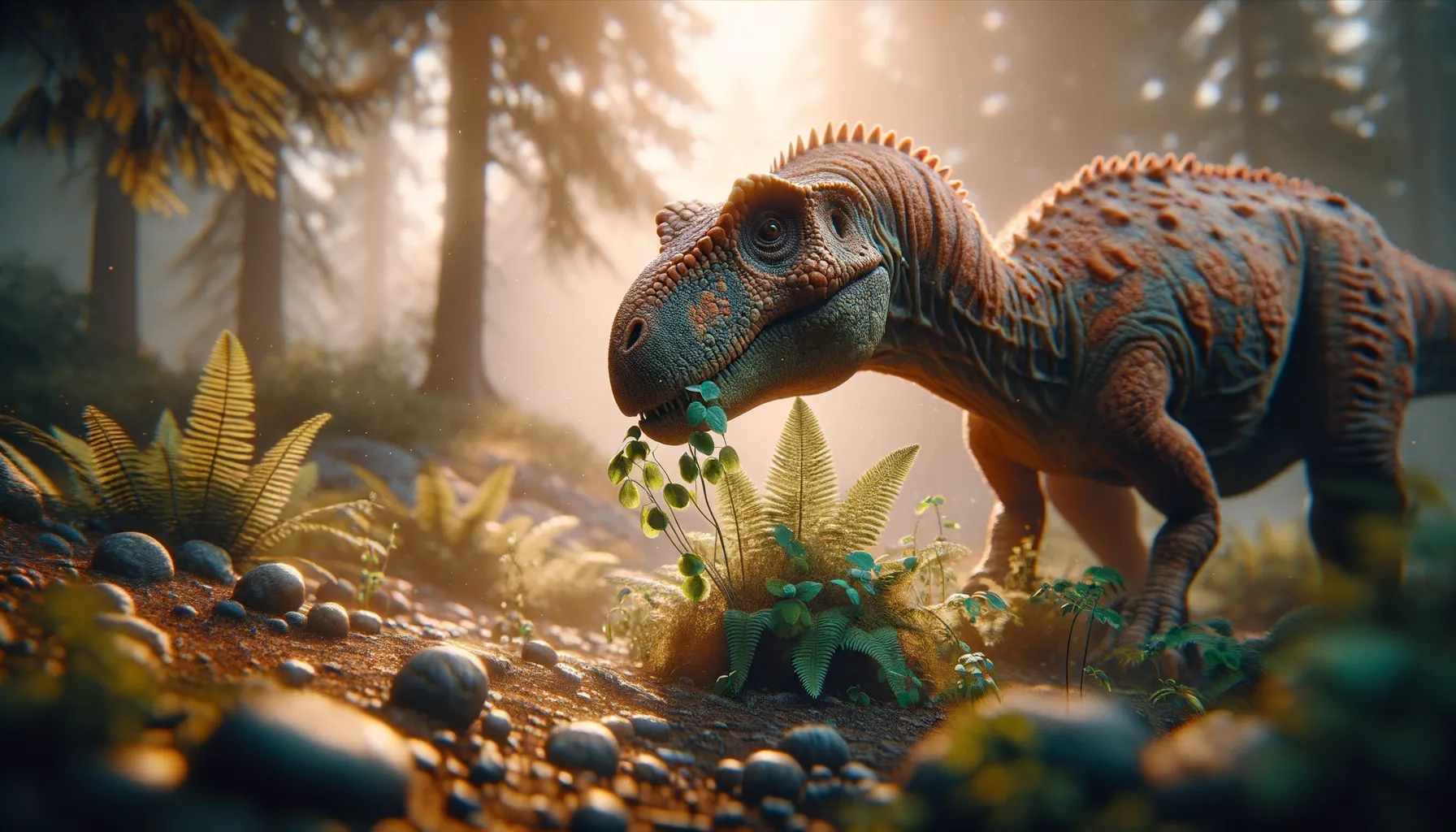
Sphaerotholus
Dome-headed mystery of the Cretaceous.
Period
Cretaceous
Length
About 2 meters in length.
Height
Stood about 1 meter tall at the hips.
Weight
Approximately 100-150 kilograms.
Sphaerotholus was a small pachycephalosaurid dinosaur known for its distinctive domed skull, adapted for head-butting behavior. It roamed the Late Cretaceous landscapes of what is now North America. As a herbivore, it fed primarily on low-lying vegetation. The thick skull structure suggests some level of social interaction or competition during its lifetime.
Diet
Sphaerotholus was a herbivore, consuming mainly plants and leaves. It likely fed on low-lying vegetation that was abundant in its environment.
Hunting
Being a herbivore, Sphaerotholus did not hunt. Instead, it foraged for plants, possibly gathering in small groups to feed.
Environmental challenges
The Cretaceous environment posed various challenges, including changing climates and the presence of larger predators. Sphaerotholus had to adapt to find food and evade predators. Its domed skull may have been used to fend off threats or for territorial disputes.
Speed
Likely not very fast, moved cautiously.
Lifespan
Estimated to have lived around 20-30 years.
First discovery
First discovered in the 1970s in North America.
Fun Facts
- Sphaerotholus was a type of dinosaur known as a pachycephalosaur, famous for its dome-shaped skull.
- The name 'Sphaerotholus' means 'spherical dome,' referencing the dinosaur's rounded skull.
- Sphaerotholus lived during the Late Cretaceous period, around 70 to 65 million years ago.
- This dinosaur was a herbivore, meaning it ate plants, and likely lived in forested environments.
- Sphaerotholus is believed to have used its thick skull to head-butt rivals or perhaps during mating rituals.
- Fossils of Sphaerotholus have been found in North America, particularly in what is now the United States.
- Despite its fierce-looking head, Sphaerotholus was a relatively small dinosaur, about the size of a large dog.
Growth and Development
Sphaerotholus grew rapidly during its early years, developing its characteristic thick dome. The skull continued to thicken as it matured, possibly serving as a display feature or for intraspecies competition. Fossils suggest that they grew in stages, like other pachycephalosaurids.
Habitat
Sphaerotholus inhabited forested areas and plains, rich with vegetation. These environments provided ample food and shelter from predators. The dinosaur adapted well to its surroundings, exploiting available resources effectively.
Interaction with other species
Sphaerotholus likely shared its ecosystem with other herbivores and predators. Its thick skull suggests possible head-butting interactions with its own species. It coexisted in a diverse ecosystem, balancing competition for resources with other species.
Natural lifespan
Sphaerotholus likely lived up to 20-30 years in the wild.
Reproduction
Sphaerotholus reproduced by laying eggs, like most dinosaurs. The dome-headed species likely engaged in courtship displays involving head-butting to attract mates. There is limited evidence on nesting behavior, but communal nests may have been possible.
Social behaviour
The bony structure of Sphaerotholus suggests social behavior involving head-butting or display. These dinosaurs could have lived in small groups for protection. Their social interactions might have included establishing dominance or territorial claims.
Fossil locations
Fossils of Sphaerotholus have been found in North Dakota and Montana, USA. These findings help paleontologists understand and map their geographic distribution. The relatively limited fossil record presents challenges in fully understanding this species.
